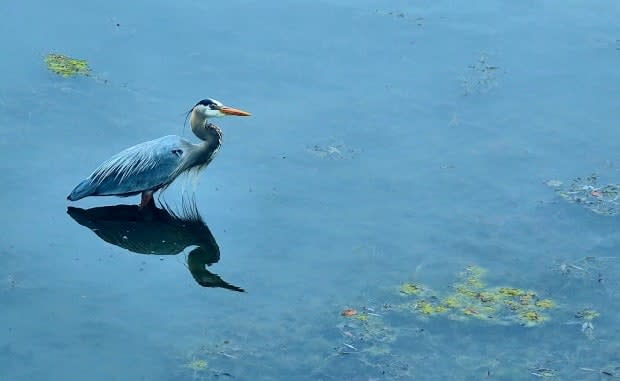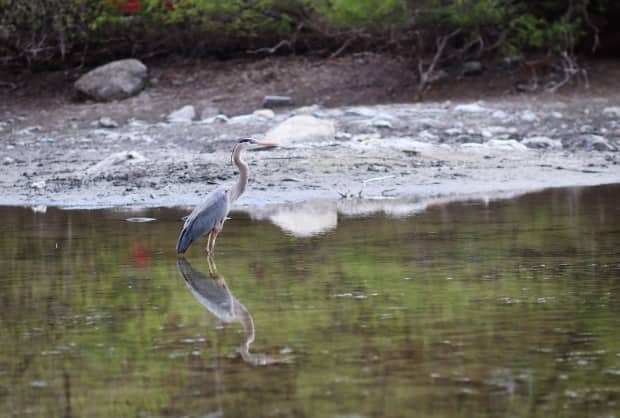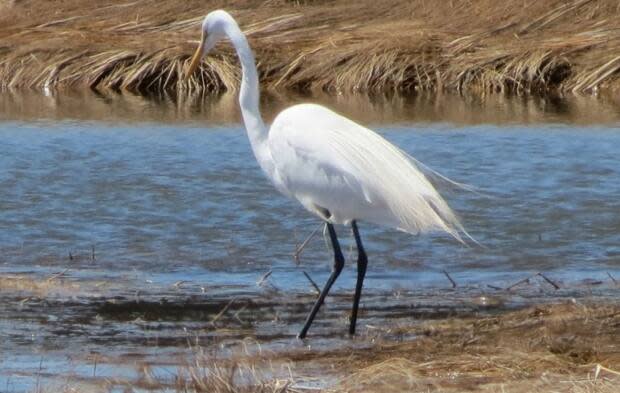Spotted a few herons this spring? There's a reason for that

If you've pointed or gawked at a great blue heron chilling along the Rideau Canal this spring, you're not alone.
There aren't necessarily more herons in the Ottawa area this year, but they've certainly been easier to spot, said Alexander Stone, environmental program officer with the National Capital Commission.
The reason: lower-than-normal levels on the region's waterways.
When water levels are lower, Stone said, there's less distance between the surface and the small fish, amphibians and other aquatic creatures great blue herons dine on.
That means the birds don't have to hug the shallow shorelines for a bite to eat, Stone said. They can fan out onto the water itself — making them easier to spot, especially with more folks using the canal and river pathways for exercise during the COVID-19 pandemic.
"You generally see more of them out and about in those open habitats [when levels are low], versus if the water levels are quite high," Stone said. "Then they're less visible and they're hiding in other wetlands."
Conditions were ideal this year for low water levels, with the Ottawa River Regulation Planning Board noting both below-average snowfall along the river, and an early onset of balmy spring weather.
With Parks Canada recently allowing more water to flow into the Rideau Canal, the great blue herons there have mostly moved on to other spots, Stone said.

Enter the egret
While great blue heron populations have stayed relatively stable, it's a different story for another unmissable bird.
Great egret populations have been on the rise every year since the first nest was spotted in the National Capital Region in 2005, Stone said.
The reason, however, remains a mystery.
"It could be related to a number of factors including species distribution — they may be finding themselves able to expand. Or it could be related to climatic events," said Stone. "But we don't know what's driving the population increase."

It's also unclear what ecological impacts, if any, will come from rising egret populations, although Stone said egrets and great blue herons do compete for the same nesting sites.
Andrew Haydon Park and Shirley's Bay are two of the best places locally to spot great egrets, he added.

 Yahoo Movies
Yahoo Movies 